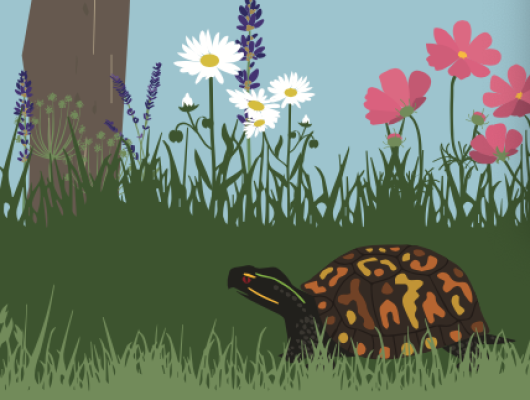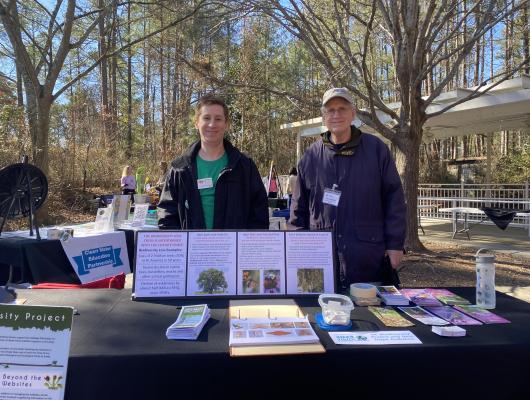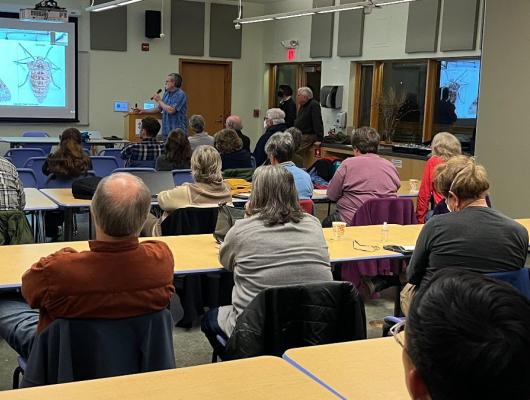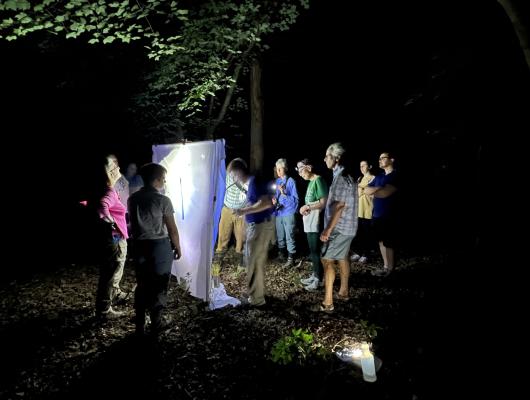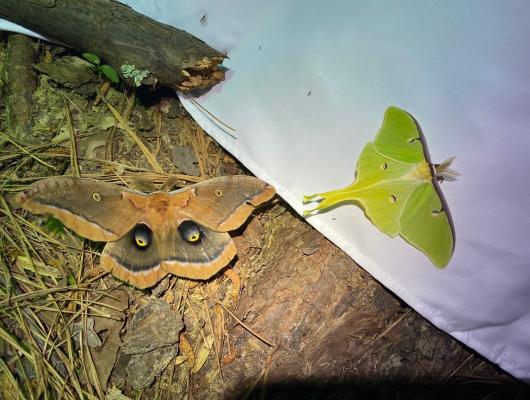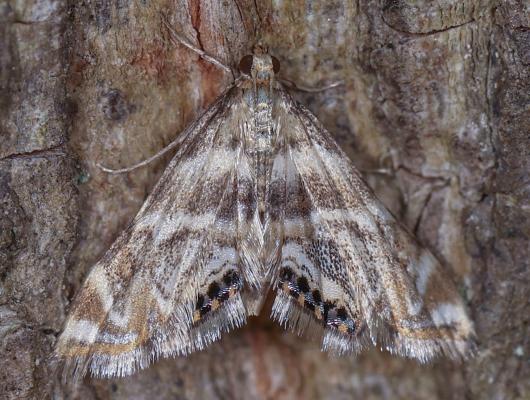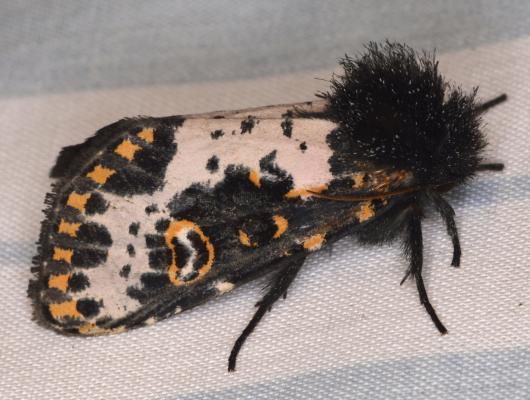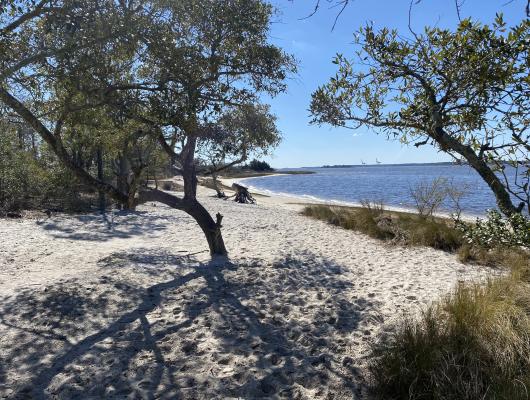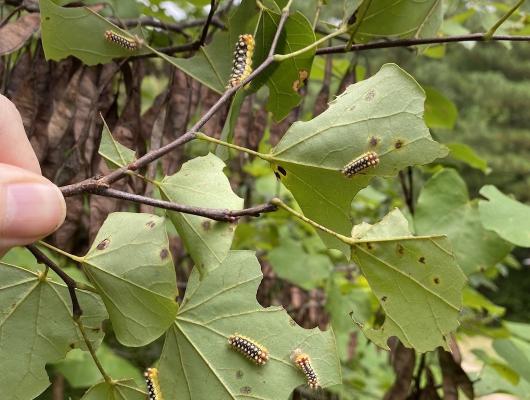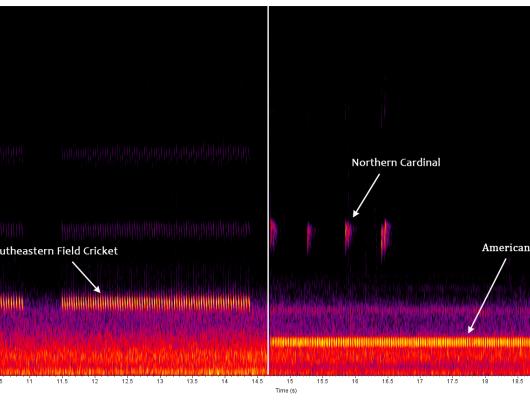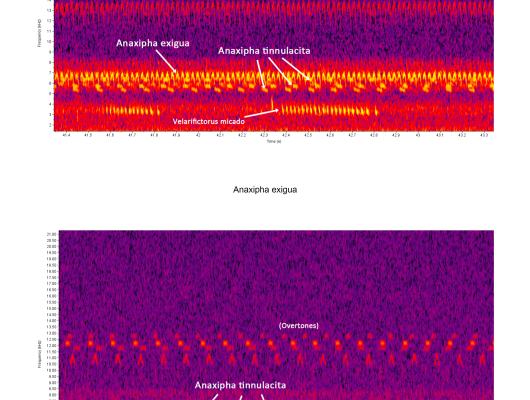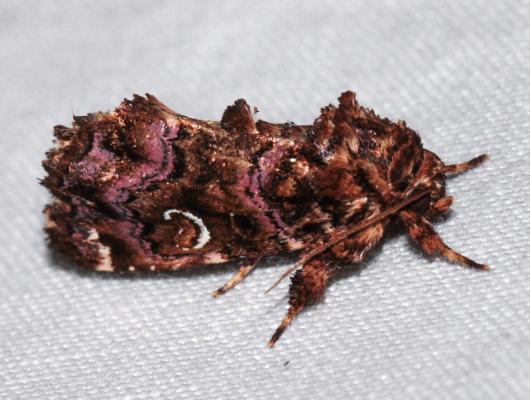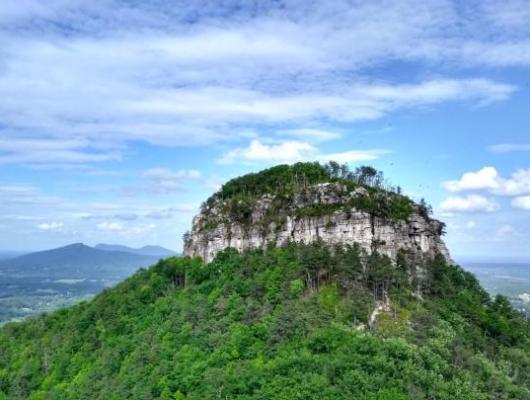Read articles and field notes from the NCBP members.
2024 Annual Meeting
On March 2, the NCBP held its annual meeting at William B. Umstead State Park. We had accomplished a great deal over the last year, including the launch of new websites for tardigrades and reptiles, and the creation of three standing committees. The following is a recap of what was discussed at the meeting.Finance and Governance Committee (Carol Tingley)Carol gave an update on the NCBP’s finances…
Mystery Leaf-miners
If you are like us, you are ready for spring! While the weather is starting to warm up, there isn’t much insect activity at this time of year. One insect that is active in the winter is a leaf-mining moth in the genus Rhopobota in the family Tortricidae, the larvae of which are typically leaf-tiers or leaf-rollers. In addition to being active at this time of year, this Rhopobota is of particular…
Youth Climate Summit
I was joined at the Museum of Life and Science last week by the New Hope Audubon for a table at the Youth Climate Summit. This event is attended by over 100 high school students from around the state, who come together to attend sessions relating to climate change and create their own climate action plans. We had a lot of engagement from the students, and I was encouraged by their commitment to…
New Hope Audubon Outreach
John Petranka and Steve Hall were invited to make a joint presentation at the February 2024 meeting of the New Hope Audubon, entitled “Backyard Moths and Beyond." John discussed lepidopteran origins, various adaptions related to moth scale patterning (e.g., camouflage, startle responses, and warning coloration), the diversity of moth sizes and shapes, and the links between native plant diversity…
Moth Night at the Parker Preserve
Steve Hall led a public moth night at Parker Preserve in association with the NC Botanical Garden. Pictured below is a selection of the more than 90 species of moths that were photographed on the sheets by David George, Stephen Dunn, and Jeff Niznik.
Moth Watch at the Museum of Life and Science
Last Saturday, the Museum of Life and Science, in partnership with the Ellerbe Creek Watershed Association, hosted a public moth night on the museum grounds. I helped to organize this event, and was joined by NCBP members Carol Tingley and Tom Howard. The event was in conjunction with the 2023 Durham BioBlitz, and attendees were encouraged to submit their sightings through iNaturalist. Rich…
Haw River Moth Irruption!
The other day, John Petranka and I went to investigate an irruption of moths along the Haw River in Alamance County. We were following a tip that great numbers of Petrophila moths had recently been observed along the banks of the river. What we found was unlike anything I have ever seen. Moths in such numbers as to defy estimation - hundreds of thousands? millions? As far as I walked downstream,…
Carolina Beach Survey Update
Stephen Dunn and I just completed our first survey trip to Carolina Beach State Park, and I learned a great deal in the process. This was my first time trapping in the field, and it was not a success. Although I made a few mistakes, the biggest problem was probably the weather. In addition to a violent thunderstorm with hail the first night, wind was an issue both nights. However, we did get…
Carolina Beach Moth Survey
Over two decades ago, Steve Hall and Bo Sullivan conducted a multi-year survey of sites along the North Carolina coast as part of an effort to assess the impact of spraying to control the spread of the invasive Gypsy Moth (Lymantria dispar) in the state. One of the sites that they heavily sampled was Carolina Beach State Park. Located south of Wilmington in New Hanover County, the park lies on a…
Hunting for Caterpillars (and their hosts)
Nothing against butterflies, but moths are seriously underrated. Butterflies are but a strange, wonderful, and relatively small evolutionary branch of Lepidoptera, an order which is primarily made up of moths. Just look at our species totals for North Carolina: 178 species of butterflies and nearly 3,000 species of moths. We are continuously adding new moth species to the state list (the true…
Morgan Creek Greenway Field Notes
At the North Pole, temperatures reached above freezing this week, a momentous event of global significance occurring in the middle of the dark, arctic night. Down here in Chapel Hill, it reached a far less ominous but still remarkable 78 degrees today and has been almost as warm the past several days. For some species, this is just a brief warm spell such as they always take advantage of.…
2017 Carolina Beach State Park Bioblitz
In the 1920s and 30s, Bentley Fulton, NC State University's renowned orthopterist, made a number of collecting trips to Carolina Beach, capturing, among other things, three crickets that would later become the type specimens for the Salt-Marsh Ground Cricket (Allonemobius sparsalsus), Beach Trig (Anaxipha litarena) and Tidewater Trig (Anaxipha tinnula). No modern records appear to exist at this…
Moth Night at the NC Botanical Garden
After a late afternoon thunderstorm cleared out around 6:00 pm, we were able to hold a Moth Night down in the Piedmont Trails section of the North Carolina Botanical Garden, with 16 people in attendance. Sheets and blacklights were set up at two locations in the floodplain of Meeting-of-the-Waters Creek, with banana bait painted along the trail leading down to the sheets. Despite the preceding…
Bioblitz at Pilot Mountain State Park
Cicinnus melsheimeriA bioblitz, organized by Ed Corey, was conducted at Pilot Mountain State Park on the 17th and 18th of May, involving day-long surveys of fish, herps, odonates, butterflies, moths, and other taxonomic groups. One of the more interesting species of moths that was observed is Melsheimer's Sack-bearer (Cicinnus melsheimeri), so-named due to the cases the larvae wrap around…
